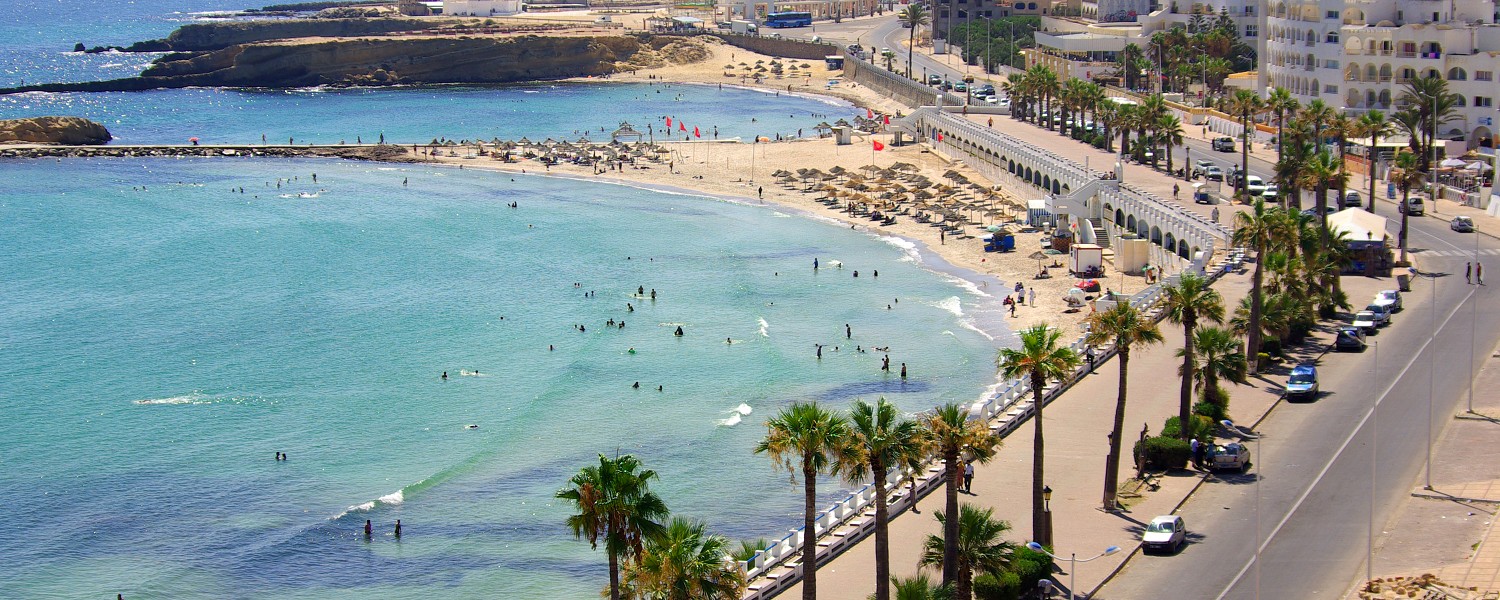
Provided by:
Natalia Sidorova/shutterstock

Our travel guides are free to read and explore online. If you want to get your own copy, the full travel guide for this destination is available to you offline* to bring along anywhere or print for your trip.
*this will be downloaded as a PDF.Price
€4,95
The City
The guide was updated:
Monastir was founded in the 9th century on the ruins of the Punic-Roman city of Ruspina. The Ribat is the best preserved example of the architecture from this period and remains the main historical attraction of Monastir today. The Ribat is also home to the Museum of Islamic Art and Artefacts, where visitors can take a peek at some trinkets dating back over one thousand years. Get a glimpse of how the quarrels between the Fatimids and the people of Ifriqiya led to the golden age of Monastir during the Ziri era when Maliki jurisprudence was being ushered in as the bedrock of Islamic law. The Zirid Dynasty spread messages of spirituality and religion as far as Southern Europe which are recognisable even in today's interpretations of the Quran.
Perhaps the second golden era of Monastir took place just seventy years ago, when the Tunisian Monarchy was dissolved and Habib Bourguiba was named the first president of Tunisia. Bourguiba played a pivotal role in Tunisia's evolution into an independent state, passing reforms in healthcare and women's liberation amongst many others. Bourguiba features heavily throughout the city of Monastir, from road names to life-sized cardboard cutouts in the street. He is everywhere. The golden-domed Bourguiba Mausoleum is another standout example of Tunisian architecture, demonstrating elements of Maliki heritage and typical features of the Magreb.
Although Monastir started life as a fishing port and defensive stronghold, today the city is more of a purpose-built tourist town connected by a network of pristine streets and lavish landscaping. Most of Monastir’s tourist hotels are situated five or six kilometres west of the town centre near Skanes, which is conveniently close to the airport. Pay a visit to the neighbouring cities of Sousse or Kairouan and the magnificent El Jem to get a taste of real, ancient and untouched North African culture.
Perhaps the second golden era of Monastir took place just seventy years ago, when the Tunisian Monarchy was dissolved and Habib Bourguiba was named the first president of Tunisia. Bourguiba played a pivotal role in Tunisia's evolution into an independent state, passing reforms in healthcare and women's liberation amongst many others. Bourguiba features heavily throughout the city of Monastir, from road names to life-sized cardboard cutouts in the street. He is everywhere. The golden-domed Bourguiba Mausoleum is another standout example of Tunisian architecture, demonstrating elements of Maliki heritage and typical features of the Magreb.
Although Monastir started life as a fishing port and defensive stronghold, today the city is more of a purpose-built tourist town connected by a network of pristine streets and lavish landscaping. Most of Monastir’s tourist hotels are situated five or six kilometres west of the town centre near Skanes, which is conveniently close to the airport. Pay a visit to the neighbouring cities of Sousse or Kairouan and the magnificent El Jem to get a taste of real, ancient and untouched North African culture.


